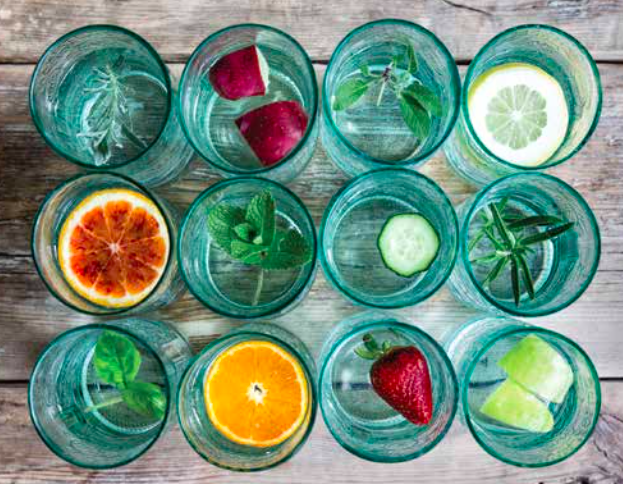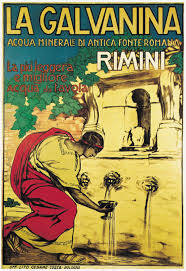A Sip of Ancient Rome
The water flowing from this famed spring started miles away as snow and rain falling on the Apennine Mountains collecting in pools underground. The water then slowly passes through sandstone and clay, becoming naturally carbonated and enriched with a delicate balance of minerals. It travels more than two years, an amazing 30 months, through this natural ecological filter composed of tightly packed quartz sand protected by gigantic banks of clay dating back to the Pliocene Era in its trip from the Apennine to Rimini where it bubbles out of the spring ready to be bottled. To discover for myself about these springs that have been written about for centuries I recently visited Galvanina, the company that first began bottling this sparkling water in 1901.
A long underground tunnel, with glass lined observation windows, was built so visitors could view part of the spectacular natural filtrations system the spring water travels. During excavations to create the viewing tunnel and repair the ancient Roman fountain, they discovered a remarkable number of archeological finds including a marble bust dating to the time of Caesar Augustus (1st century BC), ancient Roman amphora and terracotta water pies.
“In the past bottled mineral water was only for the very wealthy, costing more than even wine,” notes Galvanina CEO Rino Mini. Even today, when sparkling mineral water is much more affordable, not all waters are the same. Some (including Galvanina itself) are naturally effervescent, while others use carbon dioxide to create bubbles.
There are many ways to enjoy natural spring water: Add sliced fruit, veggies or herbs for do-it-yourself natural thirst quencher. Use it to brew espresso or coffee. Not only will you get a tastier hot beverage, but it will keep your coffee maker cleaner and prevent it from building unpleasant residue. Steam vegetables in sparkling water to keep their bright color. Mineral water also softens the vegetables so they need less time to cook and retain more of their natural nutrients. Add sparkling mineral water instead of water or other liquids in cake recipes or cake mixes. The sparkling water makes it rise nicely and results in a fluffier texture. It’s perfect for batter too, making anything you fry crunchier and lighter.







































i-Italy
Facebook
Google+
This work may not be reproduced, in whole or in part, without prior written permission.
Questo lavoro non può essere riprodotto, in tutto o in parte, senza permesso scritto.